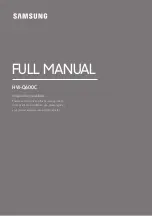
Crestron
Surround Sound
Primer
decibel refers to the measurement of signal increase or signal strength
instead of sound pressure level, but the logarithmic scale concept
remains the same.
Decibel Scale
VU and dB
VU and dB meters both measure the audio power and they both use
logarithmic scales to report that power. In both measures, the zero is
chosen as the highest power for which distortion is acceptable.
Where VU and dB differ is in how they measure audio power. VU is
short for "volume units" and it is a measure of average audio power. A
VU meter responds relatively slowly and considers the sound volume
over a period of time. Its zero is set to a 1% total harmonic distortion
level in the recorded signal.
Decibel (dB) meters measure instantaneous audio power. A dB meter
responds very rapidly and considers the audio power at each instant. Its
zero is set to a 3% total harmonic distortion level. Because of these
differences in zero definitions, zero on the dB meter is approximately
+8 on the VU meter.
Perception
The human ear can usually hear sounds in the range of 20 Hz to 20
kHz, but are most sensitive to sounds from 2 KHz to 4 KHz, the same
range as the human voice. With age, this range decreases, especially at
the upper limit. Very Low frequencies (below 20Hz) cannot be heard,
but loud low frequency sounds can be felt as vibrations on the skin. The
frequency resolution of the ear is, in the middle range, about 2 Hz.
Changes in pitch larger than 2 Hz are noticeable. Even smaller pitch
Primer – DOC. 6122
Surround Sound
•
3








































